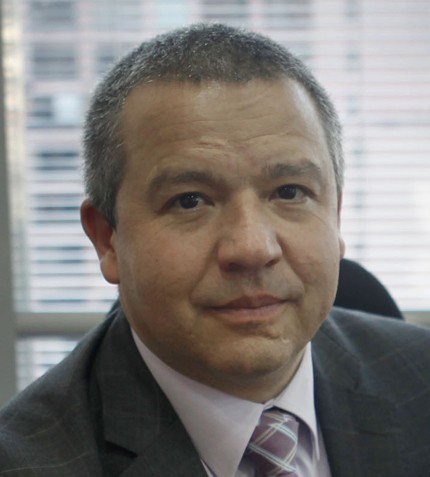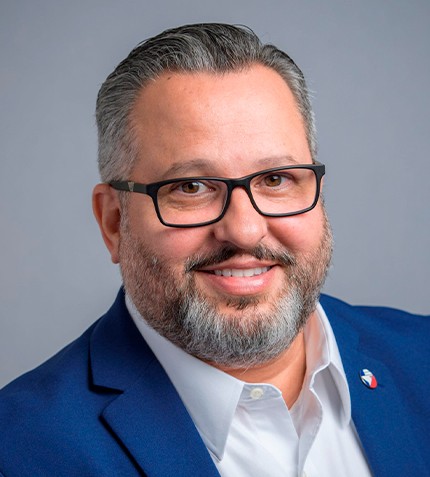
"In light of the pandemic, many companies have been facing challenges with the inter-Latam supply chains, mainly due to constraints on capacity and container availability for ocean shipments. This reality drove companies to look for land transportation alternatives to ship their goods around the continent."
Helio Coelho
GLOBAL CHEMICAL SALES DIRECTOR – LATIN AMERICA, BDP INTERNATIONAL
Can you provide an overview of BDP International’s presence in Latin America and the significance of the chemical industry to your business?
Founded in 1966, BDP International has a global network of offices servicing 134 countries. We support customers globally regardless of where they produce or deliver, leveraging our network operating systems and teams to run sophisticated process models. Eight of the ten largest chemical companies in the world have assigned BDP as their logistics provider. In Latam, we have 14 offices and are present in six countries. Over the past 20 years, we have positioned ourselves as one of the leading logistics companies for the chemical sector in the region. Our core services include forwarding, customs brokerage and air, ocean and inland transportation, as well as value added services in the areas of supply chain redesign, technology, and innovation.
How has BDP dealt with the challenge of rising freight costs and longer lead times during the pandemic?
Global export and import demands have increased despite the pandemic, but companies are facing logistical challenges due to lack of space and equipment and port and terminal congestions, which drastically impacts the flow of goods, creating backlogs. Ocean transportation is critical, but companies have started to look for alternatives such as road or air transportation to try and meet demands.
In Latam, besides the pandemic, we have encountered other supply chain interruptions due to political instability. For instance, a protest in Colombia caused the Port of Buenaventura to close, forcing shipments to be diverted. We have a strong presence in Colombia and quickly collaborated with our customers to implement and execute out of the box ideas such as cabotage transportation and usage of our free trade zones services in Cartagena, to ensure business continuity and to minimize the impacts of the disruption.
Can you elaborate on BDP’s use of smart solutions and technologies and the benefits thereof?
Today, digital technologies and advancements drive competitive advantage. BDP leverages technologies to alleviate customer pain points and enable supply chain resiliency. Customers require greater visibility throughout the entire network to reduce risk and optimize performance.
BDP’s Smart Suite is a digital solution for planning, monitoring, and managing shipments across the entire supply chain, which provides the forecasting, tracking and visibility needed to put the customer firmly in control. The platform offers a collection of intuitive applications designed to provide shippers with real-time, end-to-end visibility of the data, documentation, milestones, and exceptions associated with digital supply chain activities. BDP believes that the future of global logistics is where experience and innovation intersect to provide customers with solutions that create sustainable value.
What do you think could be done to improve the logistics deficit in Latin America?
In light of the pandemic, many companies have been facing challenges with the inter-Latam supply chains, mainly due to constraints on capacity and container availability for ocean shipments. This reality drove companies to look for land transportation alternatives to ship their goods around the continent. Factors such as extensive distances, poor road infrastructure, and security are some of the challenges faced when transporting goods by road. I believe that it is required for the main economies in the region to start seeking a common agenda. They need to discuss what can be improved in terms of rail connectivity and road infrastructure, and evaluate how barriers and bureaucracy can be reduced for the private sector to make investments and developments in these areas.
How is BDP is working to minimize its environmental footprint and contribute to a more sustainable supply chain?
BDP is cognizant of the impact transportation has on global emissions. The company has launched BDP Mission CO2 to help our customers achieve their carbon reduction goals. As part of this program, we are providing our customers the opportunity to purchase carbon offsets to help them bridge the gap between their supply chain emissions and carbon neutrality.
What are BDP International’s main goals and objectives in Latam for the next 12 months?
Latam is one of BDP’s main focus markets. Over the past few years, we have experienced significant growth due to the expansion of our coverage to new markets such as Peru and Uruguay. Finally, BDP will continue to invest in new technologies to bring digital solutions to key areas of our business and supply chain.










